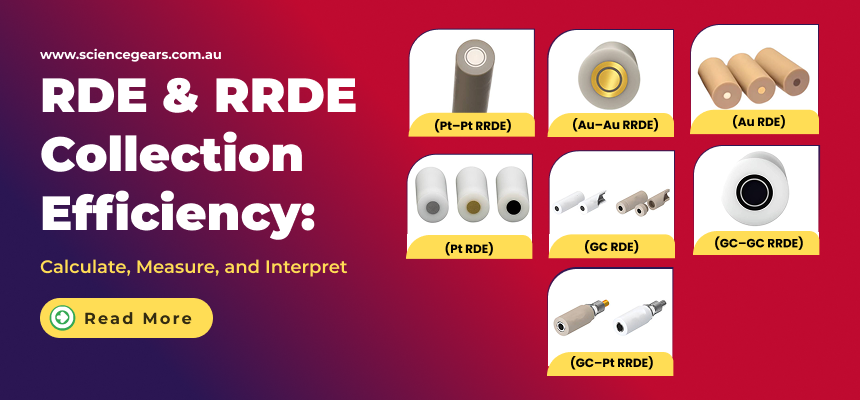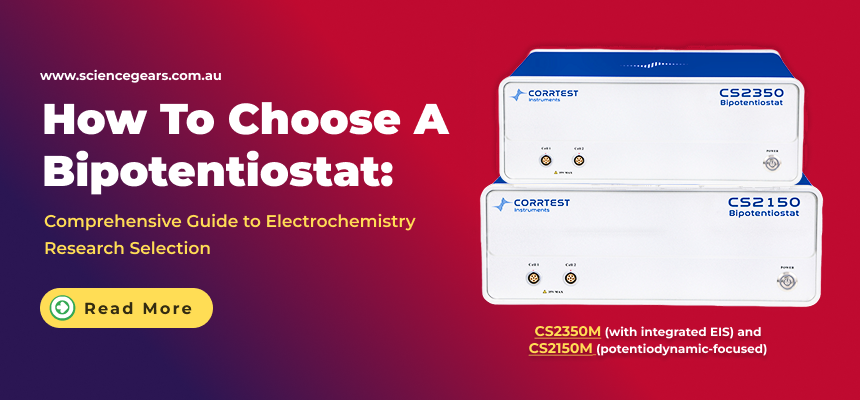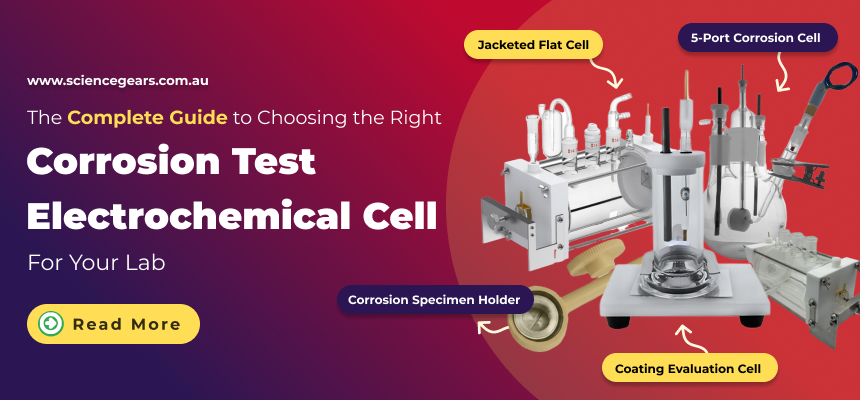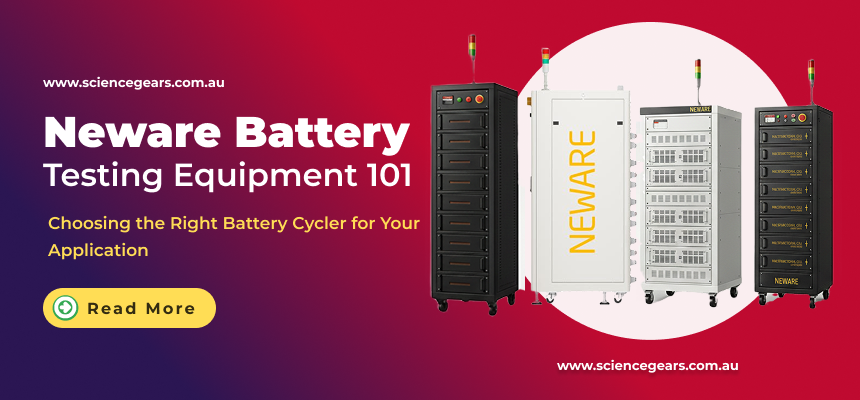Choosing the right potentiostat is fundamental to the success of your electrochemistry experiments, whether you’re developing biosensors, assessing material corrosion, electrocatalysis (HER, OER, CO₂RR), fuel cells, or researching next-generation batteries. The best potentiostat for your lab balances technical specifications with application needs and budget, making informed selection essential for reliable data and reproducible results.
Quick Overview: Potentiostat Selection Essentials
- Define your application: Are you focusing on batteries, electrocatalysts, fuel cells, biosensors, or corrosion studies?
- Match specifications: Potential/current range, sampling rate, number of channels, and instrument compatibility must align with your experimental demands.
- Software matters: User-friendly, robust data acquisition and export software is as important as hardware.
- Special features: Application-focused options and modularity ensure future proofing and robust support.
- Best practices: Proper setup, calibration, and documentation are vital for high-quality, publishable data.
Figure 1. A typical potentiostat setup used in electrochemical experiments.
What Factors Should You Consider When Choosing a Potentiostat?
1. Potential Range
Potentiostats should be chosen according to the voltage range of your experiment. For example, studying the redox reactions of organic molecules often requires at least ±2V, while advanced battery research or corrosion may demand wide ranges (up to ±10V or more). Undershooting this specification can limit your ability to probe reactions or devices accurately.
2. Current Range
Ensure the device can both source and measure currents relevant to your experiments. Sensitive biosensor work may need detection down to picoamperes, while supercapacitor or fuel cell studies require much higher maximum currents. Many modern instruments offer multiple current ranges, but the key is matching both sensitivity and dynamic range to your expected signals.
3. Data Capabilities
A high sampling rate (especially for techniques like fast-scan cyclic voltammetry or impedance spectroscopy) allows for accurate and time-resolved data collection. Please be sure to look for onboard memory, USB/ethernet/wireless connectivity, and compatibility with your analysis software pipeline. Complex protocols require advanced waveform programming as well as real-time data visualisation to be successful.
4. Compatibility
Check how the potentiostat integrates with your electrodes, measurement cells, peripheral devices (e.g., temperature controllers, spectrometers), and software. Open-source systems might be appealing for flexibility or cost, but ensure ongoing support and compatibility with your workflow.
Application-Specific Selection: Which Potentiostat for Which Experiment?
Corrosion Studies
Corrosion research often needs wide voltage windows, robust current handling (to accommodate both small and large corrosion currents), and excellent stability for long-term measurements. Features like automated Tafel analysis save significant time.
Biosensors
Biosensor work benefits from potentiostats with ultra-low current measurement (pA or lower), minimal electrical noise, compact footprints, and high-frequency data collection. Compatibility with microelectrode arrays or screen-printed electrodes is highly beneficial.
Application |
Voltage Range |
Current Range |
Channels |
Key Features |
|
Corrosion |
±10 V |
µA–A |
1–4 |
Long-term stability |
|
Biosensors |
±2 V |
pA–µA |
1–8 |
Low noise, high SNR |
|
HER/OER/CO₂RR |
±5 V |
nA–A |
Multi |
EIS, multichannel |
|
Fuel Cells |
±5 V |
mA–A |
Multi |
ORR testing, temperature |
|
Batteries & Supercapacitors |
±10 V |
µA–A |
Multi |
Fast sampling, multiplex |
Table 1. Application-driven potentiostat selection—matching specifications to research goals.
Electrocatalysis: HER, OER, CO₂RR
Electrocatalysis is at the heart of modern energy research, encompassing reactions like the hydrogen evolution reaction (HER), oxygen evolution reaction (OER), and carbon dioxide reduction reaction (CO₂RR).
HER & OER are crucial for water splitting and hydrogen fuel production. High-performance potentiostats with low noise and precision control are needed to measure the subtle currents and voltages involved, especially when evaluating new catalysts (like transition metal chalcogenides or phosphides).
CO₂RR is vital for converting captured carbon dioxide into valuable fuels or chemicals. Selectivity and suppression of competing HER are key challenges, so you need a potentiostat that supports fine control over potential and current, as well as integration with techniques like online product analysis and impedance spectroscopy.
Multi-Channel Requirements: Many electrocatalysis studies demand concurrent measurements on different electrodes or simultaneous long-term stability tests, making multichannel potentiostats ideal.
Learn more about our potentiostats and galvanostats perfectly suited for HER, OER, and CO₂RR studies: Potentiostats-galvanostats
Figure 2. A potentiostat with a 40A Booster.
Fuel Cell Research
Fuel cells, which convert chemical fuel (often hydrogen) and oxygen into electricity via electrochemical reactions, represent a frontier in clean energy. Ongoing research focuses on:
- Catalyst Development: Measuring the oxygen reduction reaction (ORR) efficiency and durability.
- Impedance and Performance Characterisation: Potentiostats must support EIS and high-current measurements for realistic testing of membrane electrode assemblies and full-cell stacks.
- Custom Protocols: Advanced fuel cell protocols may require programmable waveforms or integration with environmental chambers.
A versatile potentiostat that integrates smoothly with external hardware and offers field-upgradable features is invaluable for evolving fuel cell studies.
Next-Generation Battery Research
From solid-state to lithium-sulphur and sodium-ion batteries, research is advancing rapidly:
- Wide Voltage/Current Range: Next-gen chemistries may use higher voltages and more extreme cycling, pushing potentiostat specifications.
- High Sampling Rates: Resolving rapid processes and degradation phenomena necessitates fast, high-resolution data acquisition.
- Parallel Testing: Battery labs benefit from multichannel or multiplexed instruments for screening multiple cells in parallel, automating charge/discharge protocols, and supporting long-duration cycling.
TIP: The latest research focuses not only on lithium-ion chemistries but also on lithium-sulphur, sodium-ion, and solid-state batteries each with unique analytical and hardware requirements.
Figure 2. Battery study using a potentiostat.
Energy Research (Batteries and Supercapacitors)
Energy materials research requires broad current and voltage ranges, as well as support for advanced techniques (e.g., EIS, charge/discharge cycling). Parallel channel operation, running multiple cells at once, increases throughput. Fast response times ensure accurate measurements of high-power devices.
Practical Example:
In my lab, transitioning from a general-purpose bench-top potentiostat to an application-specific multichannel system accelerated our battery screening workflow by 40%, with fewer data artifacts and easier scalability.
Best Practices for Experimental Setup and Data Interpretation
- Electrode Preparation: Always clean and properly condition electrodes to reduce noise and variability.
- Cell Configuration: Maintain consistent cell geometry, use high-quality cables, and minimize stray capacitance.
- Calibration: Regularly calibrate both potential and current channels per manufacturer instructions.
- Software Checks: Validate your analysis routines with standard solutions and reference materials to catch systematic errors.
- Data Interpretation: Understand noise sources, baseline drift, and non-idealities in your electrochemical system. Comparing data across systems? Ensure similar settings (filtering, integration times) to maintain consistency.
- Document Everything: Detailed experimental logs (instrument settings, environmental conditions, electrode batch numbers) support reproducibility and valid publication.
Expert Insights and Industry Best Practices
Leading supplier Sciencegears frequently emphasises that “the most common errors in electrochemical measurements arise from mismatched hardware specifications, software oversights, or inadequate experimental setups.” Investing extra time in carefully matching instruments to the specific experiment often provides greater benefits than simply upgrading hardware specifications.
Unique Value: Lessons from the Field
Over a decade working with both academic and industrial teams, I’ve seen even advanced researchers occasionally overlook vital compatibility or data integration pitfalls. One key lesson: investing in modular systems or instruments with field-upgradable channels or software pays off as research focus shifts and new experiments emerge.
If budget constraints are tight, open-source hardware projects offer surprising performance with customisation options—but be prepared for a hands-on setup and more basic software. For high-throughput or regulatory-compliant workflows, established commercial systems with dedicated support are the safer long-term investment.
Ready to Advance Your Research?
Selecting the right potentiostat is key to unlocking new potential, ensuring your results are reliable and publication-ready. Need tailored advice, specialised products, or technical support? Connect with our experts here for personalised help and the most current solutions.
FAQs: Potentiostat Selection by Application
HER, OER, CO₂RR (Electrocatalysis)
- Why is a multichannel potentiostat recommended for HER, OER, or CO₂RR studies? Multichannel systems allow the simultaneous testing of multiple electrodes or catalysts, enabling direct comparison of performance and durability under identical conditions—a major advantage in catalyst screening.
- What role does EIS (Electrochemical Impedance Spectroscopy) play in electrocatalysis research? EIS helps characterise the interfacial properties, charge transfer resistance, and reaction kinetics, which are critical for understanding and optimising catalyst behaviour in HER, OER, and CO₂RR.
- How do I suppress competing side reactions (e.g., HER vs. CO₂RR) in my measurements? A potentiostat with high potential accuracy and programmable control lets you fine-tune testing protocols and apply selective potentials to favour desired reactions while monitoring possible side reactions.
Fuel Cell Research
- What features are critical in a potentiostat for complete fuel cell stack testing?
Wide current range, EIS support, and seamless integration with temperature control and other hardware ensure accurate assessment of stack performance and degradation. - Why is temperature integration important in fuel cell measurements?
Fuel cell efficiency and kinetics depend heavily on temperature. Integration allows automated capture of data under realistic, variable operating environments. - How does ORR (Oxygen Reduction Reaction) analysis benefit from advanced potentiostat functions?
Accurate potential/currents, advanced waveform programming, and high-resolution data reveal insights into ORR catalyst activity, stability, and degradation mechanisms.
Batteries
- Why do battery labs need potentiostats with wide voltage and current ranges?
Different battery chemistries (Li-ion, sodium-ion, etc.) and formats operate at various potentials and current levels. Wide ranges ensure the instrument can accommodate diverse research and testing requirements. - How does a fast sampling rate impact battery research?
Fast sampling is essential to capture rapid events during charge/discharge cycles, detect safety issues, and track transient degradation processes. - What’s the advantage of parallel (multichannel) battery testing?
Parallel testing allows high-throughput screening and long-term cycling of multiple cells, improving efficiency and accelerating R&D output.
Corrosion
- What potentiostat capabilities are essential for corrosion studies?
Broad voltage/current capabilities, automation options (e.g., Tafel analysis), and long-term measurement stability are crucial for accurately determining corrosion rates. - Why is long-term testing important in corrosion research?
Corrosion often progresses over extended periods. Potentiostats must maintain accuracy and stability to effectively monitor changes and simulate real-world conditions.
Biosensors
- Why is ultra-low current sensitivity crucial for biosensor work? Many biosensor signals are at the picoampere or nanoampere level. High sensitivity ensures accurate detection and quantification of small currents, which is often the difference between a working and non-working device.
- How does a high signal-to-noise ratio (SNR) improve biosensor measurements? High SNR reduces background noise, making it easier to distinguish true signal from artifacts—vital for the reliability and reproducibility of biosensor assays.
- What are the benefits of multi-electrode or compact systems for biosensors? Multi-electrode systems enable array testing (for multiplexed detection), while compact designs fit directly with micro/nano-fabricated devices for on-site or portable applications.
If you need tailored advice for your specific application, contact our technical experts for support.







